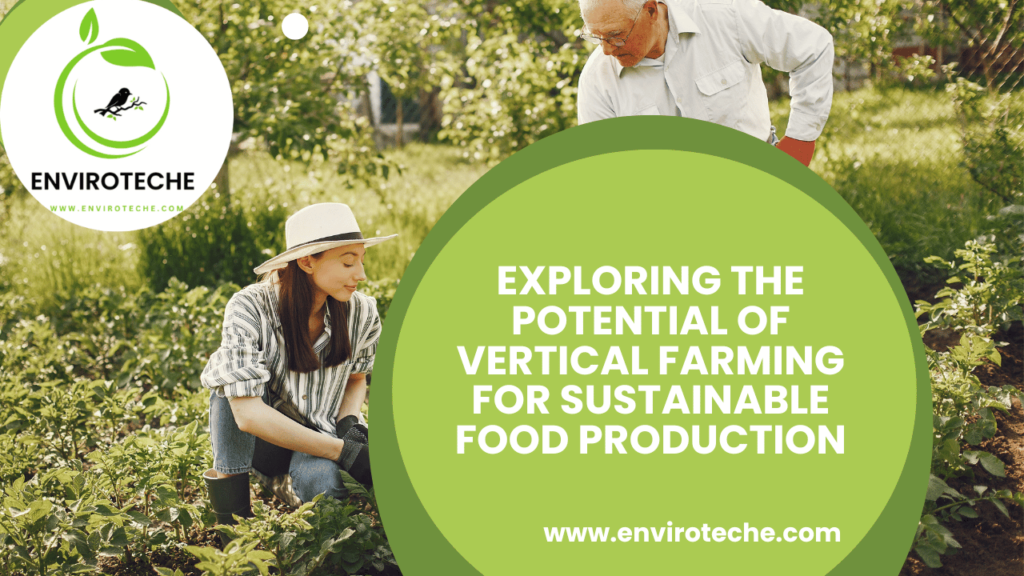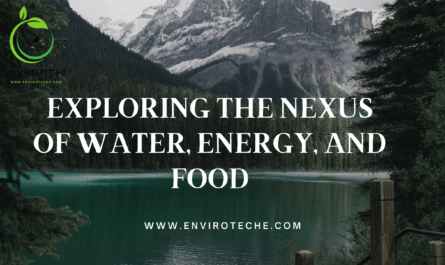
Muhammad Qasim1, Irfan Haidri1
1Department of Environmental Sciences, Government College University Faisalabad
Introduction:
The idea of vertical farming has received a lot of attention recently as a potentially effective way to deal with the problems associated with food production in a world that is quickly urbanizing. Vertical farming, which cultivates crops in layers that are vertically stacked, has many advantages over conventional agriculture techniques. By highlighting its primary advantages and potential future effects, this blog intends to explore vertical farming’s potential as a sustainable approach to food production.
- Efficient Use of Space: The potential of vertical farming to maximize land use is one of its main benefits. Vertical farms can produce much better yields per square foot than conventional farms by stacking crops vertically in buildings with multiple floors or by using hydroponic and aeroponic systems. By bringing food production closer to highly populated regions, this vertical development makes optimal use of urban space and lessens the need for elaborate transportation systems.
- Efficient Use of Space: Maximizing the use of available land is one of vertical farming’s main benefits. Vertical farms can outperform traditional farms in terms of yields per square foot by stacking crops vertically in multi-story buildings or by using hydroponic and aeroponic systems. This vertical growth enables food production closer to highly populated areas, decreasing the need for massive transportation networks, and allowing for optimal use of urban spaces.
- Climate Independence: Crops can be grown in a controlled environment with vertical farming instead of relying on a good climate. Growers may ensure that each crop receives the ideal temperature, humidity, and light levels by using cutting-edge technologies like LED lighting, climate control systems, and nutrient monitoring. With year-round farming made possible by this climatic independence, seasonal differences are less noticeable, and total productivity is raised.
- Water Conservation: Traditional farming practices frequently result in significant water waste because irrigation often requires large volumes of water. Utilizing closed-loop hydroponic farms that recirculate water and nutrients while using less water, vertical farming overcomes this issue. Additionally, water use is further decreased by technologies like aeroponics that use misting devices to distribute nutrients and water directly to the plant roots. Vertical farming helps to promote sustainability and allay worries about water scarcity by preserving water resources.
- Reduced Environmental Impact: The environmental impact of food production might be considerably reduced with the use of vertical farming. The use of pesticides and herbicides is significantly decreased when crops are grown indoors, reducing chemical runoff and contamination. Furthermore, vertical farms don’t require a lot of area because of the regulated environment, which lessens habitat degradation and deforestation. Additionally, the close proximity of vertical farms to metropolitan areas shortens transportation routes and lowers transportation-related emissions for food.
- Increased Food Security: The difficulty of ensuring food security grows as the world’s population expands. Vertical farming offers a chance to solve this problem by supplying a dependable and locally managed food source. Vertical farms lessen reliance on far-off rural farms and extensive supply lines by growing crops near to urban centers. This localized strategy improves the food system’s resilience by reducing the effects of disruptions like extreme weather conditions or disruptions in transportation.
- Integration with Technology: Artificial intelligence, algorithms for learning, and information analytics are all used extensively in vertical farming. These innovations make it possible to monitor crops in real-time, to improve the circumstances for growth, and to spot disease or nutrient deficiency symptoms early on. Vertical farmers may increase crop quality, output, and resource efficiency with accurate oversight and data-driven decision-making.
- Climate Independence: Instead of relying on a favorable climate, vertical farming offers a regulated environment for producing crops. Growers can optimize growth conditions by using cutting-edge technologies to control temperature, humidity, and light levels for each crop, such as LED lighting, climate control systems, and nutrient monitoring. Since farming is possible year-round thanks to this climatic independence, seasonal variations have less of an impact overall and output is increased.
- Reduced Environmental Impact: The environmental impact of food production might be considerably reduced with the use of vertical farming. The use of pesticides and herbicides is significantly decreased when crops are grown indoors, reducing chemical runoff and contamination. Furthermore, vertical farms don’t require a lot of area because of the regulated environment, which lessens habitat degradation and deforestation. Additionally, the close proximity of vertical farms to metropolitan areas shortens transportation routes and lowers transportation-related emissions for food.
- Increased Food Security: The difficulty of ensuring food security grows as the world’s population expands. Vertical farming offers a chance to solve this problem by supplying a dependable and locally managed food source. Vertical farms lessen reliance on far-off rural farms and extensive supply lines by growing crops near to urban centers. This localized strategy improves the food system’s resilience by reducing the effects of disruptions like extreme weather conditions or disruptions in transportation.
- Integration with Technology: The utilization of cutting-edge technologies like artificial intelligence, machine learning, and data analytics is embraced by vertical farming. Real-time crop monitoring improved growing conditions, and early disease or nutrient deficiency detection are all made possible by these technologies. Vertical farmers can increase crop quality, output, and resource efficiency by using precise oversight and data-driven decision-making.
Conclusion:
In the face of escalating urbanization and environmental issues, vertical farming provides enormous promise for sustainable food production. It is an appealing future solution due to its capacity to maximize land utilization, preserve water, lessen the environmental effect, and improve food security. However there are still obstacles to be solved, such as high energy prices and upfront fees, continual technological improvements and growing public awareness of ecological issues have made vertical farming an intriguing field with limitless potential. We can create a more robust and sustainable food system by incorporating vertical farming along other agricultural techniques.
Check Other Schlorships:
